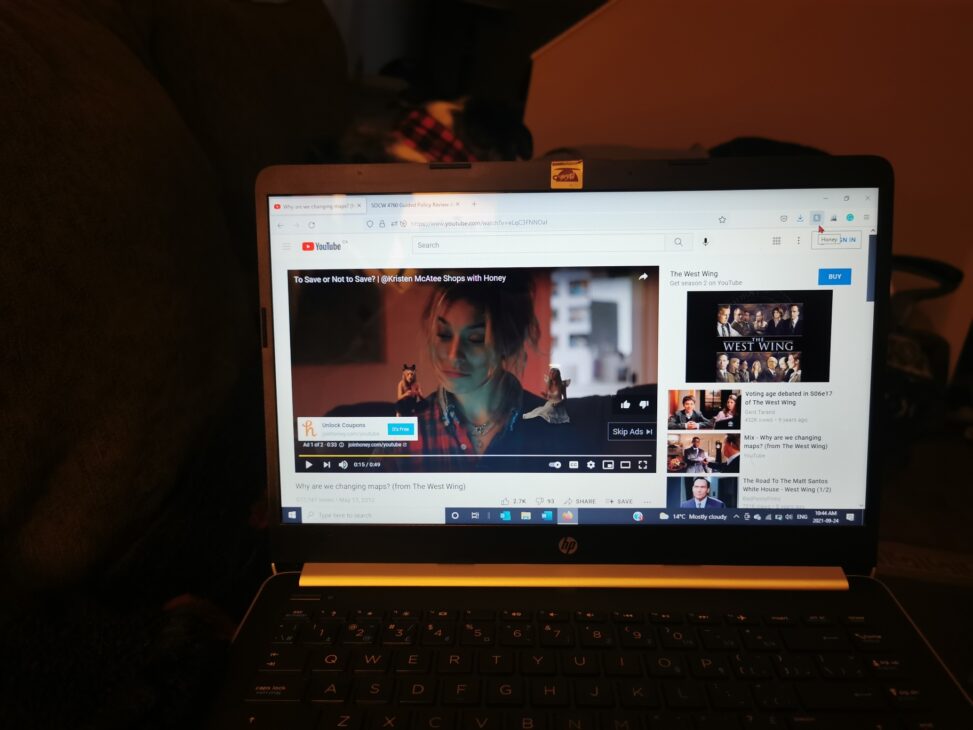Image Attribution: “Honey Coupons for a Student’s Budget.” by Kelly/ honey by PayPal is licensed under CC BY-SA. (See interactive map)
Here is an advertisement for an online couponing service offered by PayPal entitled honey (honey, 2021). honey is a free plug-in-based application consumer can install on their browsers to save money during online transactions. The main focal point of the advertisement remains on Kristen McAtee (a popular social media influencer and YouTuber) throughout the advert and visualizes her moral struggle between buying online items or not buying them and saving money. This struggle is illustrated fantastically through the repetition of her own image in the miniaturized devil and opposing angel sitting on her shoulders. Thankfully, however, honey is here to save the day! By applying coupons to your purchases at checkout, honey makes it easy to justify that online purchase because you can “save on your favorite things” while doing it (honey, 2021).
This advertisement switches from a viewer’s perspective, as we see in the above photo, and first-person point of view where McAtee converses directly with the Angel and Devil as it is a YouTube commercial conveniently placed in my homework.
I thought this frame of the advertisement was particularly interesting as it is divided into a foreground and background, where the background of the advertisement matches with my own environment. With its warm peachy-toned lamp lighting on an off-white wall in an otherwise dark room. This also matches the aesthetic of many university students such as myself and my partner (C.Bowden, personal communication, September 23, 2021).
Reading through YouTube’s advertising policy page (2021) it is clearly outlined that controversial, violent, or otherwise shocking imagery can result in the creator’s video becoming monetized. However, their linked mother policy webpage over on Google’s platform, states “please note that context is very important. Artistic content such as music videos may contain elements such as inappropriate language, soft drug usage, or non-explicit sexual themes, and still be suitable for advertising. I was also slightly baffled by the fact that Google outlines all the different categories which will get you monetized incredibly descriptively yet including such content may only result in lowering the ad count on your videos. Which, at the end of the day helps in building revenue for both YouTube as well as the creator.
I believe this advertisement was placed into my environment perfectly. The matching lighting tones, similarities in living styles and wanting to save money wherever possible. If you actually look to the top right-hand corner of the photo, you will see a honey (2021) plug-in installed into my Firefox Browser. What a shining example of product placement, and ad monetization doing exactly what it is designed to do. Provide a conduit from our daily lives and our lived experiences directly into our wallets. Even as some of us are coned into spending money more frequently because we think we are saving on our favourite items whenever we view them on our many devices that honey operates on.

